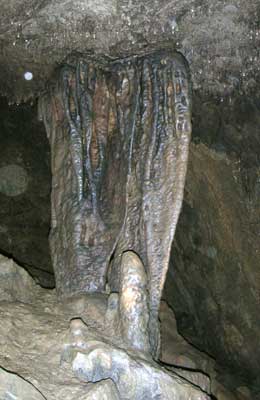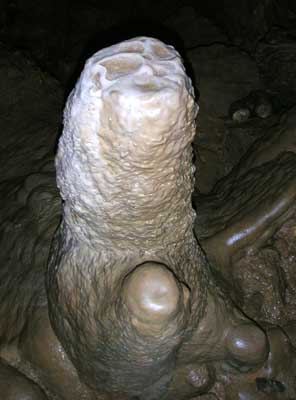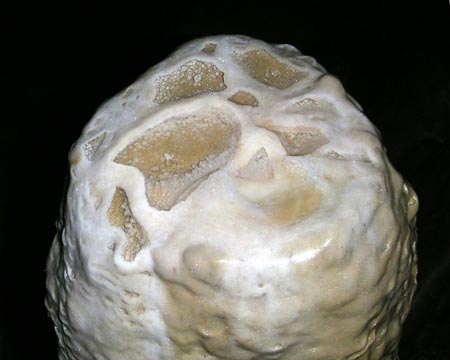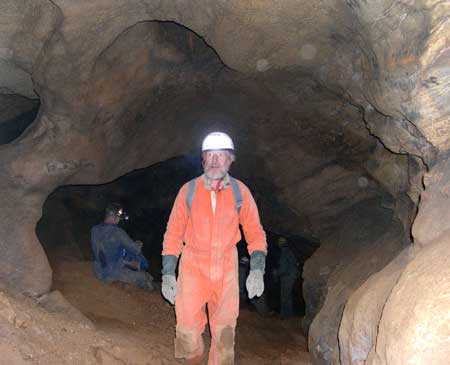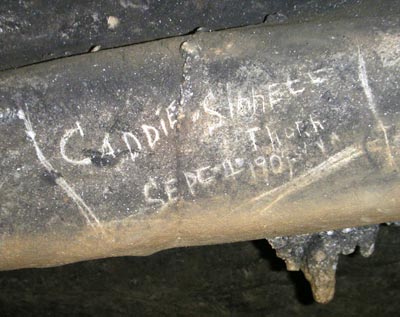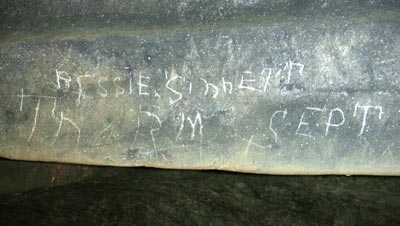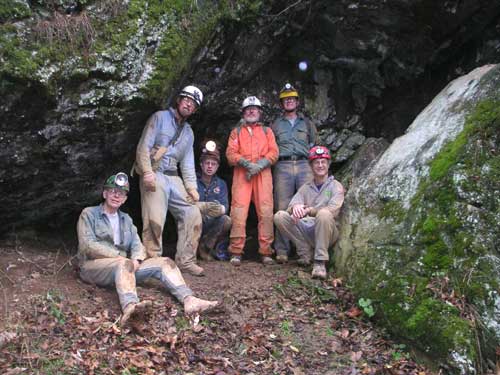
Our group at the entrance after the trip: me, George, Al, Nevin, Bill, and Chris.
Photo by Selene Deike
Bill came in from South Carolina on Friday and spent the night with us in Mustoe. We drove up together on Saturday morning and met the others at the cave. It was a rather nasty, chilly morning so we wasted no time in making our way to the entrance. Chris Swezey is a geologist with the USGS. He has prepared a field trip guide to the geology of the Sinnett-Thorn Mountain Cave System. [pdf, 693 KB] Chris presented his field trip for us as we went through the cave. We did not venture through the connection into Thorn Mountain. The small crawlway had a couple of inches of water ponded up in a low spot. Since the connection did not exist in 1956, we had a ready-made excuse not to go through it.
Climbing up to the cave entrance are John Sweet, Bill Gordon, and Al Grimm, taken from the bank of Thorn Creek.
Photo by Chris Swezey
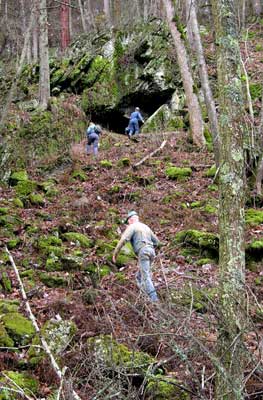
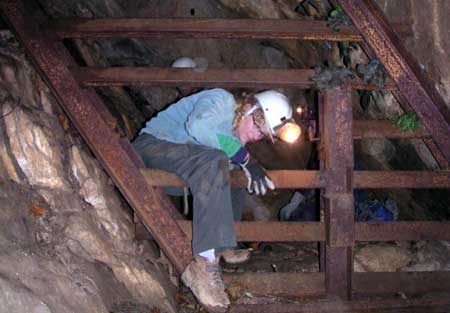
The first obstacle is the new gate, being negotiated by Selene in the above photo. I believe Chris is the only one of us who had seen the gate before. The greenery at the right is leaves brought in by cave rats for nesting material.
Several groups of Virginia big-ear bats were seen beginning their hibernation just inside the entrance. They are expected to move deeper into the cave as the season progresses. The photo at right was taken in some haste to avoid disturbing them, so the focus is imperfect. There were other groups, each with several dozen bats, for a total of at least 100.

Moving along the entrance passage are Selene, Nevin, and George in the distance. The passage in this section ranges from easy walking passage, as shown, to narrow, sinuous canyons to largish crawlways. There are no really tight spots to negotiate on the main route into the cave.
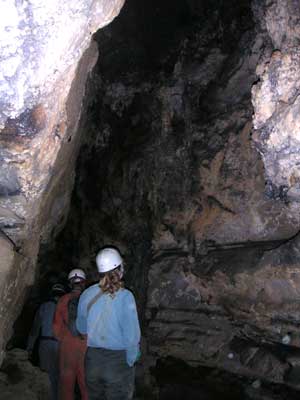
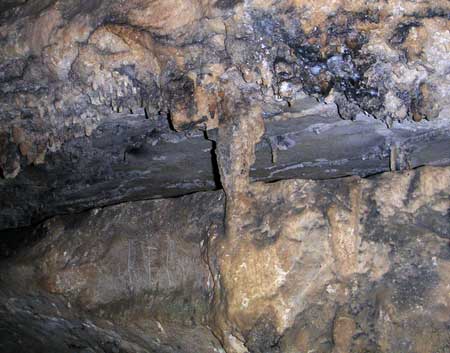
Some small formations not far from the cave entrance.
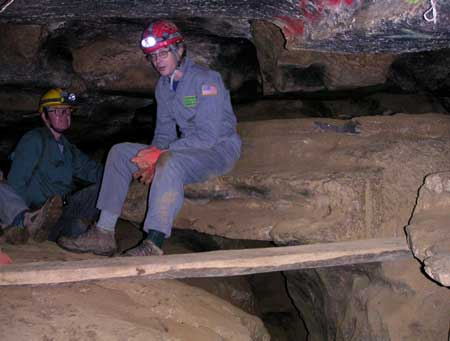
Chris is talking about the history of saltpeter mining in the cave. The board in the foreground is actually a bridge used by the miners during the Civil War. Saltpeter earth was dug in the Big Room, thrown down crevices to this level, bagged up and dragged out of the cave for processing to make gunpowder. This is Stop 3 in the tour guide.
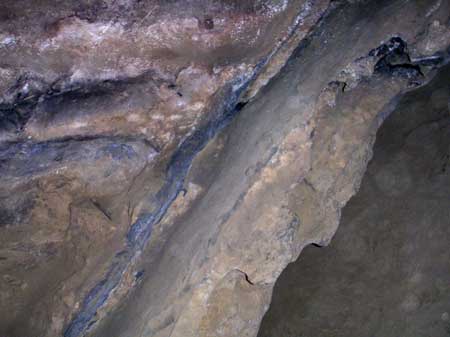
Stop 4 on the tour is this thrust fault. Layers of the Keyser limestone, at left, have been pushed up over the younger, inclined layers of the Corriganville limestone at right.
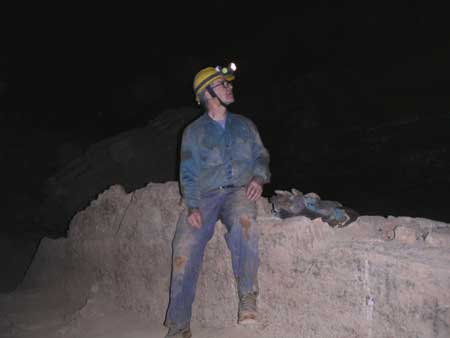
Bill Gordon in the Big Room, near the top of the Silo, above, and Chris Swezey emerging from the Silo, right.
The Silo is a twisting passage that rises steeply from stream level to the Big Room, a vertical distance of at least 60 feet, perhaps more. In the upper sections the rock has been worn smooth by the passage of thousands of cavers over the years.
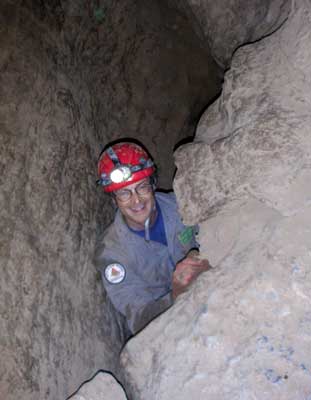
The passage leading to the waterfall is a small crawlway at the base of the Silo. My photographic efforts in the waterfall room proved unsuccessful. Fortunately, Chris captured this view of the falls with Al Grimm looking on.
Photo by Chris Swezey
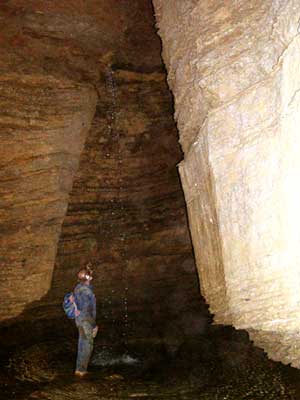
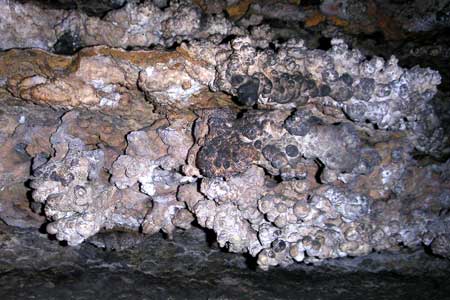
Popcorn, cave coral, or coralloids — three names for the same formation.
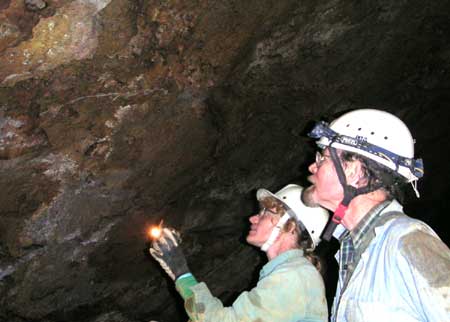
George and Selene looking at fossils on a wall in the Big Room.
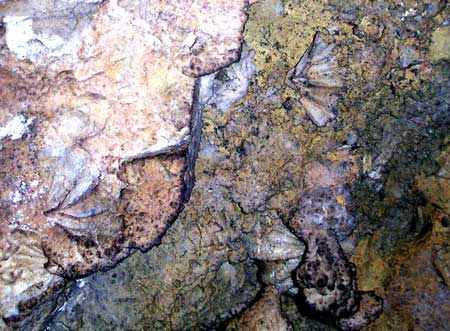
Brachiopods in the Corriganville limestone in the Big Room.

Crinoids in the New Creek limestone in the Big Room. Photo by Chris Swezey.
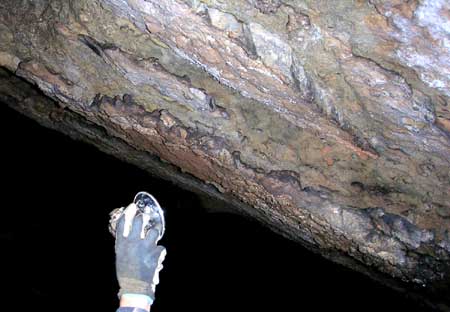
Searching for fossils in the Big Room.
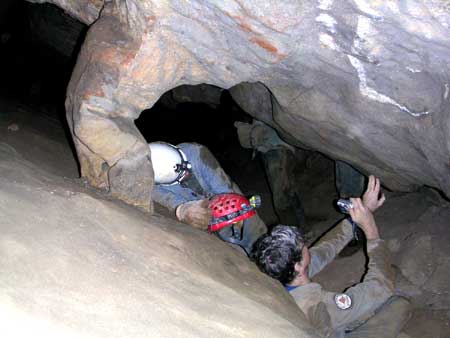
George and Chris photographing fossils near an unusual erosional feature.
